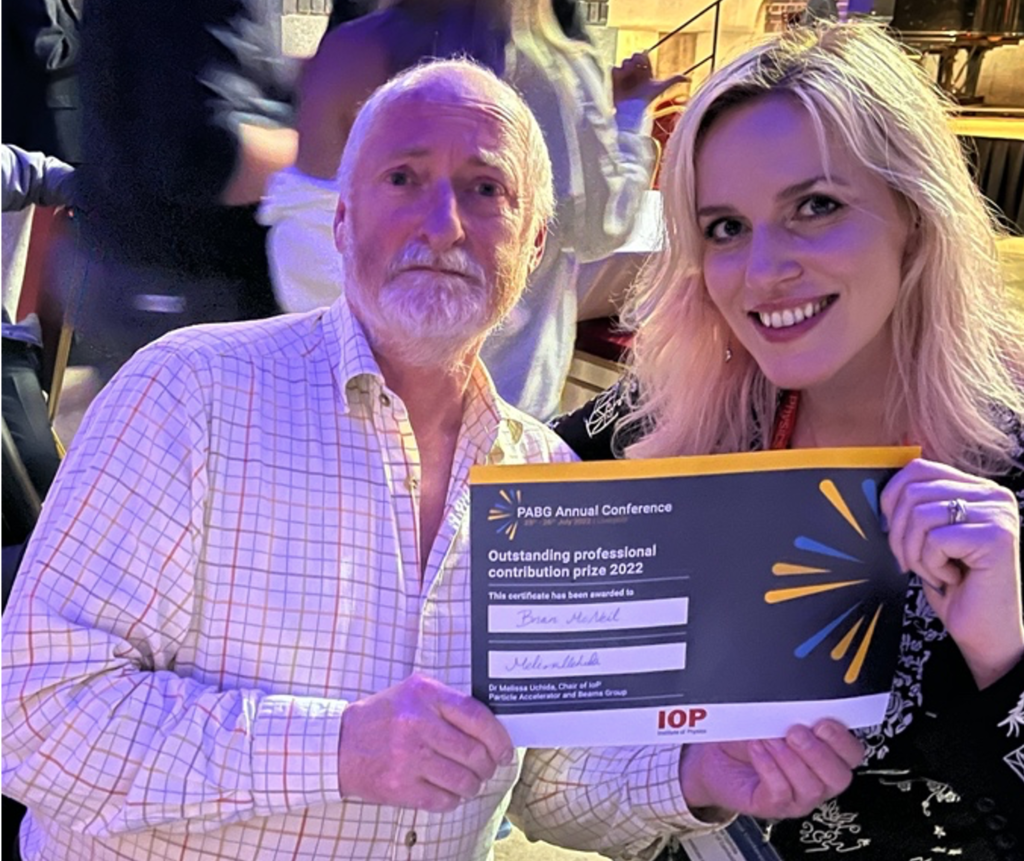
We are delighted to announce that Dr Brian McNeil from the University of Strathclyde/Cockcroft Institute is the recipient of the 2022 Institute of Physics Particle Accelerator & Beams Group Prize for Outstanding Professional Contributions to Accelerator Science & Technology.
Brian became a member of the Cockcroft Institute in 2016 but his involvement with Daresbury Lab and its free electron laser (FEL) programme goes back considerably further. It is very clear that Brian is one of a very small number of FEL experts in the UK with global recognition and he is almost certainly the UK’s leading theorist in the field. The x-ray FEL offers x-ray beams of unprecedented intensity and versatility for a wide range of applications in science. Since the start-up of the LCLS facility at SLAC in 2009 a further half-dozen or so machines of this type have been built (e.g., the European X-FEL at DESY) and several more are under development.

Brian’s contributions to FEL science began a third of a century ago with a seminal paper on super-radiance which identified the ‘single spike SASE’ regime, a paper which has attracted well over 200 citations (Google Scholar). His subsequent influence on FEL science both in the UK and elsewhere has been very significant indeed. A Nature Photonics review article on x-ray FELs that he co-authored with Neil Thompson in 2010 has received over 770 citations and has clearly played a very important role in disseminating ideas about this subject to a very wide audience in the last decade. His influence on design choices made at PSI’s SwissFEL are a perfect example of this and have been very significant.
Following the early work on super-radiance, Brian made the first study of the regenerative FEL amplifier in 1993 and in a series of four papers between 2006 and 2013, he and his co-workers were responsible for inventing the concept of applying phase-shifters along an FEL to stimulate harmonic lasing. This led for example to a method of generating zeptosecond pulses via the mode-locked afterburner. He has also played a pivotal role in supporting FEL facility development in the UK, initially with the CLARA conceptual design report in 2013 and more recently with the Science Case for a next generation UK X-FEL for which a 3-year conceptual design study has just been funded by UKRI. By the mid-2030’s such a facility could be realised and would be a wonderful legacy for Brian and the other UK pioneers of FEL science.
He has also developed a 3D simulation code called PUFFIN which is used by many groups around the world for optimizing FEL designs. He is also a brilliant lecturer and has delivered an inspirational and popular series of lectures on FEL physics to graduate students at the Cockcroft Institute for quite a few years. Brian has also served as a member of the IoP’s Particle Accelerators and Beams Group and is a very active advocate for diversity and equality in physics. Unsurprisingly, he has been a very popular and effective supervisor of PhD students, several of whom are now building their own careers in FEL R&D. SLAC, the home of the world’s first x-ray FEL, is a strong collaborator of Brian’s and has funded several of his PhD students.
Congratulations, Brian!
